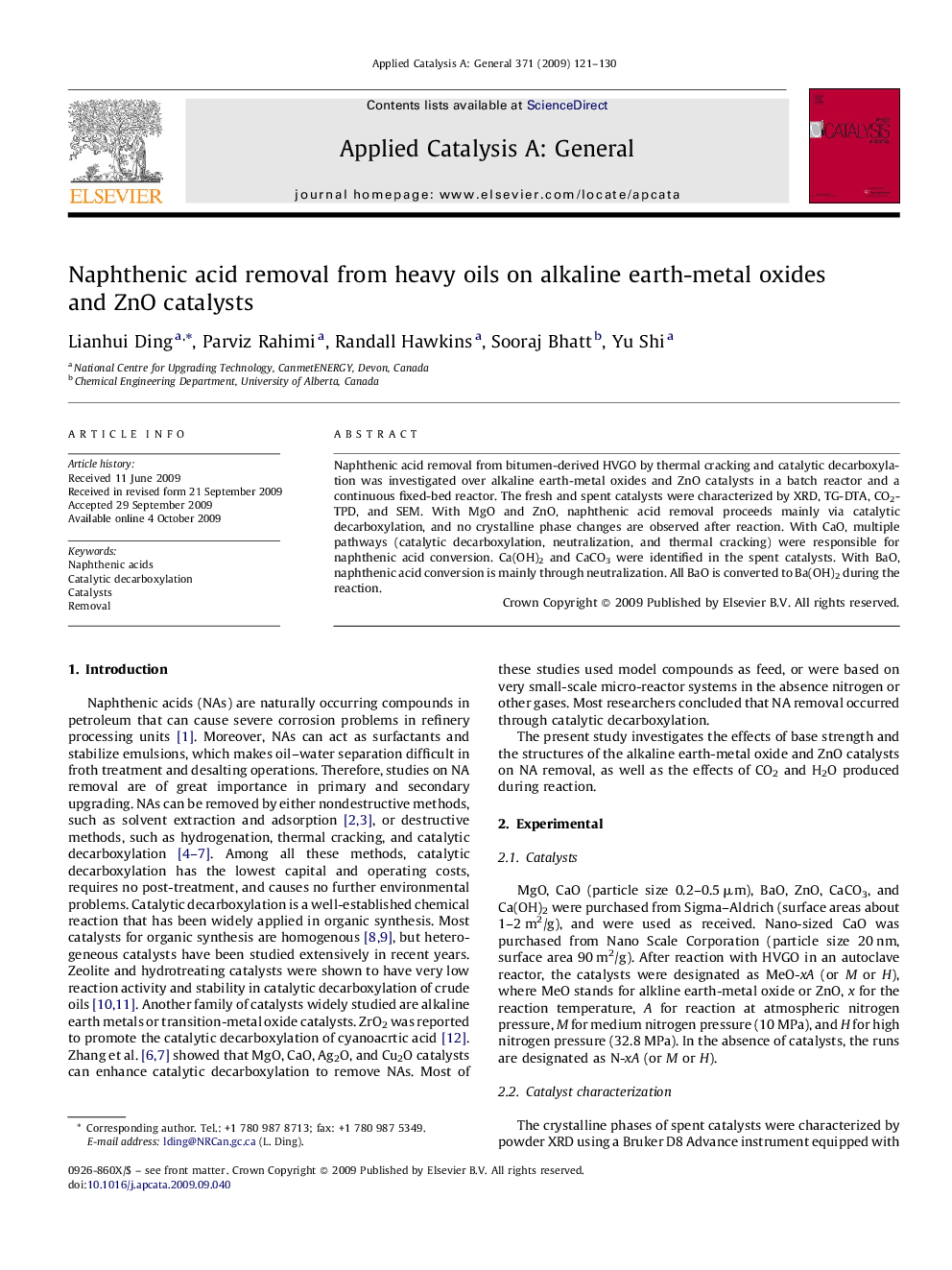| Article ID | Journal | Published Year | Pages | File Type |
|---|---|---|---|---|
| 42394 | Applied Catalysis A: General | 2009 | 10 Pages |
Naphthenic acid removal from bitumen-derived HVGO by thermal cracking and catalytic decarboxylation was investigated over alkaline earth-metal oxides and ZnO catalysts in a batch reactor and a continuous fixed-bed reactor. The fresh and spent catalysts were characterized by XRD, TG-DTA, CO2-TPD, and SEM. With MgO and ZnO, naphthenic acid removal proceeds mainly via catalytic decarboxylation, and no crystalline phase changes are observed after reaction. With CaO, multiple pathways (catalytic decarboxylation, neutralization, and thermal cracking) were responsible for naphthenic acid conversion. Ca(OH)2 and CaCO3 were identified in the spent catalysts. With BaO, naphthenic acid conversion is mainly through neutralization. All BaO is converted to Ba(OH)2 during the reaction.
Graphical abstractNaphthenic acid removal from bitumen-derived HVGO by thermal cracking and catalytic decarboxylation was investigated. With MgO and ZnO, naphthenic acid removal proceeds mainly via catalytic decarboxylation. With CaO, multiple pathways were responsible for naphthenic acid conversion. With BaO, naphthenic acid conversion is mainly through neutralization. All BaO is converted to Ba(OH)2 during the reaction.Figure optionsDownload full-size imageDownload as PowerPoint slide
